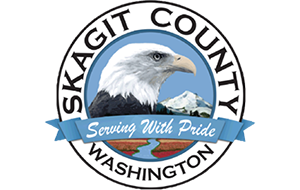Tagged with: AED Response

December 4, 2025
PulsePoint and ZOLL Accelerate Growth of National Emergency AED Registry, Helping More Communities Locate and Use Devices When Seconds Count
‘Anyone Can Register’ mobilizes volunteers and AED stakeholders to add community devices nationwide, building a comprehensive, validated registry
The PulsePoint Foundation and ZOLL®, an Asahi Kasei company that manufactures medical devices and related software solutions, including automated external defibrillators (AEDs), announces a new initiative, Anyone Can Register.
The program will rally volunteers, AED owners, and AED manufacturers to expand NEAR so AED locations nationwide are known and recommended during cardiac emergencies. Launching in February 2026 during American Heart Month, the initiative is part of ZOLL’s national Anything Can Happen. Anyone Can Help.™ campaign, which works to close the gap between CPR awareness and action by showing that AEDs do more than deliver a shock. They guide bystanders with step-by-step CPR instructions and can help improve outcomes for cardiac arrest patients.
Filed Under: Press Release, Highlights | Tagged With: ZOLL, National Emergency AED Registry, NEAR, AED Registration, AED Map, 911 AED, 911 AED Registry, Anyone Can Register, Asahi Kasei, AED Management, American Heart Month, Anything Can Happen. Anyone Can Help., CPR Awareness, AED Awareness, cardiac arrest, Nearest AED, Elijah White, National AED registry, 911 Telecommunicators, T-AED, Telecommunicator AED, AED Response, aed.new, PulsePoint AED, AED Emergency Response, Marcia Gray

August 1, 2025
Cardiac Arrest Survivor Saved Thanks to PulsePoint Respond Smartphone App and Quick Bystander Action
Dennis Hoggarth of Camano Island is alive today thanks to the swift actions of bystanders including several registered nurses and a nearby off-duty firefighter/paramedic who were alerted through the PulsePoint Respond app, underscoring the lifesaving power of technology and community involvement in time-critical emergencies.
On May 23, 2025, Skagit 9-1-1 received multiple 911 calls reporting a cardiac arrest inside the Costco in Burlington. Simultaneously, an alert was sent out via the PulsePoint Respond app, which notifies CPR-trained individuals of nearby cardiac arrest events where CPR is needed.
Filed Under: News, Event, Highlights, Press Release, Video | Tagged With: Skagit County, Save Stories, Costco, AED, CPR, Burlington, Dennis Hoggarth, Erik Loney, Burlington Fire Department, Skagit County Fire District #6, Josh Pelonio, Skagit County EMS, Bystander CPR, cardiac arrest, Off-duty Response, professional responder, CPR-trained, AED Use, AED Registry, AED Response
April 28, 2025
What to know to save a life: The key to cardiac arrest survival
Bystander training on spotting and using defibrillators can greatly improve cardiac arrest survival, but many people don’t know what to do.
When a woman collapsed on an escalator at the Buffalo airport last June, Phil Clough knew what to do. He and another bystander put her flat on her back and checked her pulse and her breathing. Then she stopped breathing altogether. Realizing that she might be having a cardiac arrest, Clough immediately started doing chest compressions, pressing hard and quickly on the center of her chest, while others nearby called 911 and ran to get an automated external defibrillator. Within seconds of receiving a shock from the AED, the woman opened her eyes. By the time the airport rescue team arrived a few minutes later, she was conscious and able to talk with rescuers.
Filed Under: News, Highlights | Tagged With: AED, CPR, cardiac arrest, Defibrillator, Defibrillator Registry, Michelle Andrews, Phil Clough, 911, Automated External Defibrillator, Automated External Defibrillator Registry, American Heart Association, AHA, AED Locations, Cardiac Arrest Stats, Identifying AEDs, NEAR Registry, Nearby AED, 911 AED Registry, National AED registry, National Emergency AED Registry, AED Registry, AED Response, AED Responder, AED Map, PulsePoint AED, PulsePoint AED Registry, Elijah White, ZOLL, CPR Training, Good Samaritan, AED Law, AED Training, Citizen CPR Foundation, citizen responder, HEARTsafe, 911 Telecommunicators, T-CPR, T-AED, AED-Needed Alerts

November 27, 2023
911-initiated AED Response: Would you be willing to bring your AED to someone nearby experiencing a cardiac arrest?
While AED registries have traditionally been used to meet regulatory requirements, the growing use of dispatch-accessible, time-of-need emergency AED registries offers meaningful new opportunities to increase the use of these lifesaving devices. In addition to telecommunicator initiatives, communities are going further by using their registries to alert AED owners and program volunteers to nearby cardiac arrest events.
Filed Under: News, Event, Highlights | Tagged With: AED, 911-initiated AED, AED Alert, AED Response, AED Registry, AED Locator, AED Locations, AED Awareness, AED Registration, AED Registry for dispatchers, 911 AED, 911 AED Registry, EMD AED Registry, Emergency AED Registry, American Heart Association, AED Use, Heartrunner, GoodSam, cardiac arrest, Chain of survival, T-CPR, T-AED, EMD, Emergency Medical Dispatcher, Defibrillator Registry, Defibrillator, Integrated AED Locations, Pre-arrival Instructions, Emergency Telecommunicators, Emergency Dispatchers, CPR instructions, Recommending nearby AEDs, The Villages, Sumter County, AED Subscription, Stephen Kennedy, Residential AED, CARES, CARES Registry, Cardiac Arrest Registry to Enhance Survival, Cardiac Arrest Survival Summit, Community AED Volunteer, AED Responder